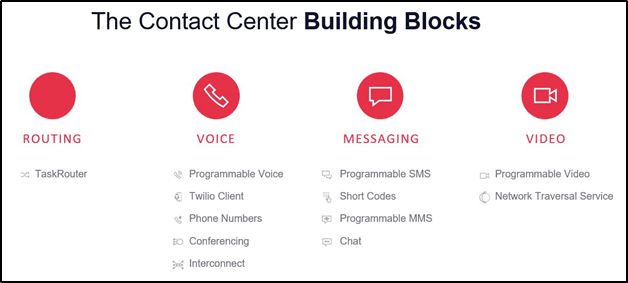What is a Contact Center?
A contact center is a business's central point for managing all customer communications across all channels. A company's contact center is usually integrated with their customer relationship management (CRM) system, where all interactions between the organization and the public are tracked, coordinated, and managed.
The term contact center is replacing the older term "call center" to reflect the modern reality that there are many other ways to connect with a customer these days besides the telephone. The International Customer Management Institute (ICMI) defines a contact center as a coordinated system of people, processes, technologies, and strategies that provides access to information, resources and expertise, through appropriate channels of communication, enabling interactions that create value for the customer and organization.
The combined trends of increased customer expectations and newer technologies that allow for many channels of communication are creating a shift in the traditional call center model which has existed for decades. Consumers want more ways to reach businesses, and businesses are looking for new ways to improve customer experience.
Contact centers support a number of different industries and functions, and often handle contacts via channels beyond the telephone, including email, chat, social media, and SMS. Contact centers deploy technological solutions and operational processes to distribute contacts to teams of contact center agents, often located in one or more locations.
In a modern multichannel or omnichannel contact center, agents handle a wide variety of communications. For example, technical support might be delivered over in-app chat or video, while order status updates are delivered via SMS, event promotions are sent as push notifications, surveys are deployed over Facebook Messenger, and inbound email sales inquiries are sent directly to an agent to connect by phone.
Multichannel refers to a contact center that uses multiple independent channels to reach a customer, such as telephone, social media, and email. Whereas omnichannel is an extension of the multichannel approach, emphasizing the synergies across all channels for an enhanced shopping and customer care experience. For example, a customer can browse a furniture company's website, live chat with an agent to ask questions about a particular couch, switch seamlessly to a video call to confirm that the couch will fit in a specific space, purchase the couch online, and then pick it up at a brick-and-mortar location.
Contact centers can handle inbound communications—such as incoming calls, emails, chats, social media, or SMS inquiries that are initiated by customers and prospects. And they can also be the hub for outbound communications—contacts made by contact center agents to reach customers and prospects, such as calls, emails, and chats.
Legacy, on-premise contact centers let businesses customize the experience they want to deliver but require costly professional services and take months (or years!) to deploy changes.
Many of these systems are running on outdated technology and infrastructure. This underlying technology impacts systems reliability, performance, and security, which is why so many businesses are migrating to a modern alternative.
When you build your contact center with communication building blocks like Twilio's programmable APIs, you can choose the channels and features you need and add more as your call center expands into multiple channels. APIs give you the flexibility to build the exact customer experience you want, and the freedom to iterate your IVR, call flows, and other aspects of your communications as frequently as you like.

If you don't want to build your own software with APIs, you can use software that already exists through a Contact Center as a Service (CCaaS) provider. CCaaS providers host the software, maintaining the servers, databases, and code. Customers access it via the internet and pay for their use on a subscription or pay-as-you-go basis. Many CCaaS offerings are built on Twilio APIs. They've taken written and tested logic, and packaged it together using contact center best practices for SMBs.
However, as many of the small and medium size enterprises using these CCaaS solutions grow, they find that their software isn't flexible enough to adapt to their changing customer and business needs. With the introduction of the programmable contact center platform, technology has evolved to offer businesses the best of both worlds. Platforms like Twilio Flex enable companies to build at unprecedented speed while customizing a unique design for their specific customer and business requirements. Although Twilio Flex is more intuitive than building with APIs, it's still an open platform meant for custom software development rather than a completely out-of-the-box solution.
See also What is a Cloud Contact Center??